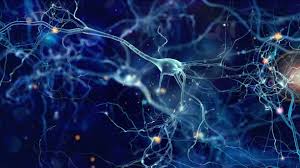13 June 2025
New insights into how the brain controls neuronal activity
A Rosetrees-funded study has shed new light on the mechanisms underlying brain stability with important implications for psychiatric conditions. Researchers identified key processes that enable neurons in the cerebral cortex to maintain a precise balance between excitation and inhibition—a balance essential for normal cognitive function, learning, and brain plasticity. However, during changes in brain activity, such as those that occur with learning, this balance can be disrupted, triggering compensatory mechanisms to preserve overall network stability.
A research team, led by Professor Oscar Marin at the Institute of Psychiatry, King’s College London, focussed on parvalbumin-expressing (PV+) interneurons, an important type of inhibitory neurons that help maintain the excitation/inhibition balance.
In mice experiments, they discovered that changes in the activity of individual PV+ interneurons drive bidirectional compensatory adjustments of the number and strength of inhibitory synapses received by these cells, specifically from other PV+ interneurons. Furthermore, they showed that increasing the activity of a PV+ interneuron leads to upregulation of two genes encoding the neuropeptides VGF and SCG2.
The study’s findings therefore enhance our understanding of how inhibitory networks self-regulate, through adaptation of interneurons and how genes affect them. This may have implications for neurological and psychiatric disorders with cognitive deficits such as autism, depression, and schizophrenia where PV+ cell function is disrupted.
Dysregulation of expression of the VGF gene that encodes for the VGF neuropeptide has already been associated with multiple neurodegenerative and psychiatric conditions, such as Alzheimer’s disease and mood disorders.
So, by identifying a critical role for VGF in regulating synaptic connectivity among PV+ interneurons, it opens up a path to better understand its contribution to the plasticity of neural activity in a variety of disorders.
In the future, it may be possible to identify compounds that can modulate the expression of VGF genes or activate/block its receptor and hence offer new types of treatment.
Full details of the study (title: Regulation of PV interneuron plasticity by neuropeptide-encoding genes) have been recently published in Nature.
Reference: https://doi.org/10.1038/s41586-025-08933-z

